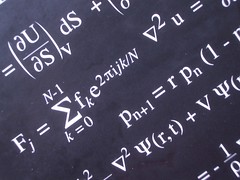 |
I have placed a preprint on the arXiv Remarks on contact and Jacobi geometry, which is joint work with K. Grabowska and J. Grabowski. |
In the preprint we explain how the proper framework of contact and Jacobi geometry is that of \(\mathbb{R}^{\times}\)-principal bundles equipped with homogeneous Poisson structures. Note that in our approach homogeneity is with respect to a principal bundle structure and not just a vector field. This framework allows a drastic simplification of many standard results in Jacobi geometry while simultaneously generalising them to the case of non-trivial line bundles. Moreover, based on what we learned from our previous work, it became clear that this framework gives a very natural and general definition of contact and Jacobi groupoids.
The key concepts of the preprint are Kirillov manifolds and Kirillov algebroids, i.e. homogeneous Poisson manifolds and, respectively, homogeneous linear Poisson manifolds. Among other results we
- describe the structure of Lie groupoids with a compatible principal G-bundle structure
- present the `integrating objects’ for Kirillov algebroids
- define contact groupoids, and show that any contact groupoid has a canonical realisation as a contact subgroupoid of the latter
Our motivation
The main motivation for this work was to put some order and further geometric understanding into the subject of contact and Jacobi geometry. We take the ‘poissonisation’ as the true starting definition of a ‘Jacobi structure’ and accept all the consequences of that choice. Importantly, once phrased in the correct way, that is in terms of \(\mathbb{R}^{\times}\)-principal bundles and their actions, the true nature of Jacobi geometry as a specialisation and not a generalisation of Poisson geometry becomes clear.
Non-trivial line bundles makes it easier?
Almost oxymoronically, passing to structures on non-trivial line bundles and then the language of \(\mathbb{R}^{\times}\)-principal bundles really does simplify the overall understanding.
This is particularly evident for contact and Jacobi groupoids where insisting on working with a trivialisation leads to unnecessary complications.
In conclusion
We hope that this work will really convince people that contact and Jacobi geometry need not be as complicated as it is often presented in the literature. Quite often the constructions become very ‘computational’ and ‘algebraic’, and in doing so the underlying geometry is obscured. In this work we really try to stick to geometry and avoid algebraic computations.